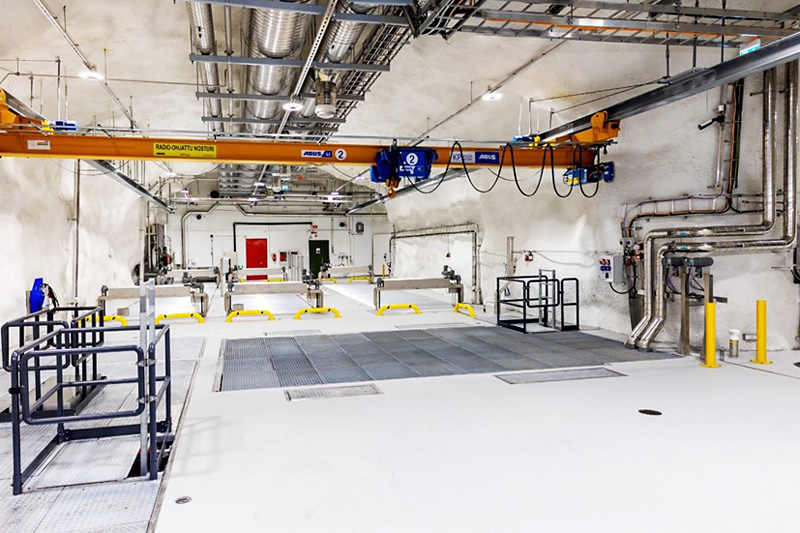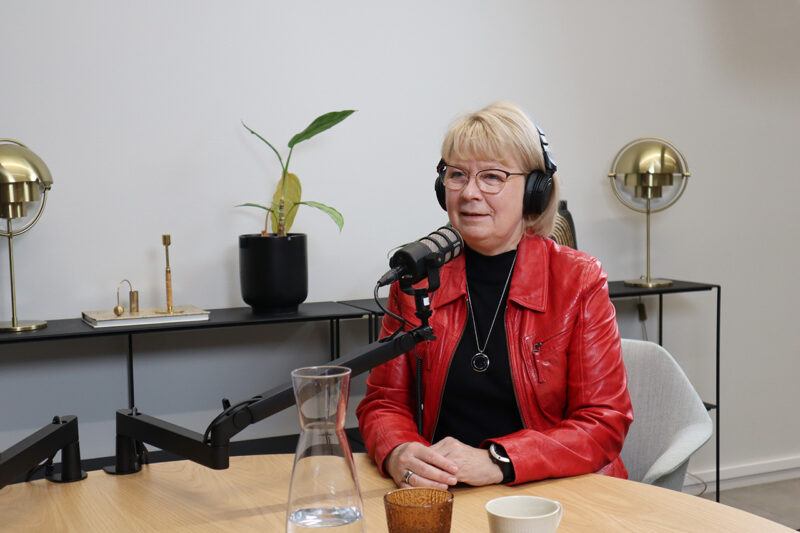Digitalization and the green transition in the energy sector go hand in hand

The core question of the ongoing transformation in the energy sector, the green transition, is how to synchronize production and consumption of wind and solar energy. In Fimpec’s “Kumppanit” podcast, Helen CEO Olli Sirkka and Fimpec Consulting Managing Director Panu Rahikka suggest that achieving this is only feasible through the opportunities presented by digitalization.
Before his current role, Helen’s CEO Olli Sirkka led DNA’s enterprise business and previously worked for a long time at Ericsson, where his last position was as Managing Director of Ericsson Finland. Given this background, he is well-versed in digitalization and its potential, and he sees leveraging these capabilities in the energy sector as essential.
“Without digitalization, the green transition in the energy sector is not possible. Manual operation alone cannot bridge the gap between production and consumption; we need to build a society that adapts to renewable energy production through digitalization.”
Fimpec Consulting’s Managing Director, Panu Rahikka, notes that this transition is often referred to as a “dual transition.” This term is apt, he says, as it encompasses both a digital transformation and a green transition happening simultaneously.
“One could even say that the green transition is, in a way, a digital one – or vice versa,” Sirkka adds.
Flexibility across the entire energy production and consumption chain
According to Sirkka and Rahikka, digitalization is a prerequisite for building flexibility across the entire energy production and consumption chain. Flexibility should not only be required of customers but also from the production side.
“This is where digitalization comes in. It enables us to detect energy consumption trends and decide whether to charge or discharge flexibility resources. Optimizing operations of production facilities can no longer be done manually; digital optimization must extend to wind and nuclear power plants. With this, we can build an optimal system where energy is always available at the right place and time. Ideally, digitalization will allow us to create a system that optimizes everything, delivering energy to customers at the lowest possible cost,” Sirkka suggests.
Rahikka emphasizes the importance of flexibility in this system, which requires real-time data on events, production, and consumption, along with reliable forecasts.
“This isn’t achievable with analog systems or manual controls. Digitalization is needed across the entire chain,” he says.
Sirkka expands on Rahikka’s point, noting that forecasts are crucial in the new energy system. Their importance grows as efforts to predict wind and solar conditions intensify.
“In the past, production could be adjusted up or down based on demand. Now, we must forecast wind and solar conditions, and these predictions are always somewhat inaccurate. Digitalization helps us compensate for forecast errors as much as possible.”
Building a flexible system
Efforts are already underway to leverage digitalization to mitigate the production and price fluctuations caused by green energy production. Sirkka highlights examples from Helen’s operations.
“Starting from the customer side, our ‘Oma Helen’ service provides customers with a digital channel to manage contracts and monitor their energy use. In the future, customers may be able to schedule how and when they consume energy.”
“On the production side, we are building battery parks and further developing our AI-powered robot, which is already trading battery content. Cheap electricity can also be stored in district heating reserves. And it’s not just batteries; wind farm production can also be actively adjusted, especially downward. With precise timing, this can correct imbalance errors. When hydrogen plants are integrated into this ecosystem in the future, running against our production and market conditions, many factors will need to be considered to build in flexibility.”
Sirkka acknowledges the complexity of this system but believes a balance can be found. This process will be driven by market forces.
“Flexibility elements will moderate extreme price volatility because they offer ways to generate revenue. This is something of a ‘win-win’ situation for the green transition. When the opportunity for profit is greatest, it’s also possible to make the most positive impact on the environment. This market-driven approach is likely the quickest path to implementation.”
Complete elimination of price volatility through digitalization isn’t the goal, Sirkka notes. Instead, the aim is to build a system where prices guide consumption to moments when clean energy is available – environmentally favorable times.
Industry can be flexible too
While flexibility in electricity consumption by industry has been relatively overlooked, major electricity users can indeed be found in this sector. Traditionally, it has been seen as challenging, but Sirkka and Rahikka see potential here as well.
“In principle, industry doesn’t want to be flexible. But I am certain that, as price volatility continues or increases with the growth of wind and solar energy, innovations will emerge on how to make processes adjustable and participate in flexibility,” Sirkka predicts.
From an industrial perspective, Sirkka views the new digitalized energy system as an opportunity and a competitive advantage for Finland. This system could attract industries that can leverage its benefits for competitive gain.
“As a green energy powerhouse, we should be able to build an energy system through digitalization that provides real financial benefits to customers who are flexible. The system should also enable customers to genuinely manage and make decisions about their energy use, choosing to run production at full capacity when necessary or slowing down on other days to benefit from flexibility,” Sirkka envisions.
He admits this goal is still far off but finds it inspiring.
“It’s why I’m in the energy sector. I want to help build this kind of world, with a globally competitive Finland.”
Olli Sirkka and Panu Rahikka were guests of Maiju Aaltonen (Hirvikallio) on Fimpec’s “Kumppanit” podcast.
Listen to Episode 12 of the “Kumppanit” podcast: “Digitalization is Essential in the Green Transition of the Energy Sector”. Please note, that the podcast is available only in Finnish.
All “Kumppanit” podcasts (in Finnish)


